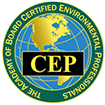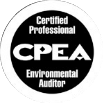The Environmental Protection Agency and the United States Army Corps of Engineers recently released their new Clean Water Act rule which refines the definition of Waters of the United States (WOTUS). This new rule goes into effect on March 20, 2023. The new rule is in anticipation of an upcoming Supreme Court ruling (Sackett v. EPA) that may limit EPA’s power to regulate WOTUS and wetlands. The EPAs strategic move aims to solidify a comprehensive definition of waterways that qualify for federal protection under the Clean Water Act. (See our January 2023 blog for more information and key takeaways of the final rule.) This new rule replaces the previous definition set in 2015 by the Obama administration, which was later repealed by the Trump administration in 2020.
2023 Definition of WOTUS
The 2023 rule provides clarity to stakeholders and regulatory agencies by defining five categories of water that are considered WOTUS and protected under the Clean Water Act. The definitions are as follows:
- Traditional navigable waters, territorial seas, and interstate waters;
- Impoundments of waters otherwise identified as WOTUS;
- Tributaries to traditional navigational waters, territorial seas, interstate waters, or impoundments if the tributaries meet either the significant nexus standard, or the relatively permanent standard;
- Wetlands adjacent to traditionally navigable waters, territorial seas, and interstate waters; wetlands adjacent to and with a continuous surface connection to relatively permanent impoundments; wetlands adjacent to tributaries that are relatively permanent; or wetlands adjacent to relatively permanent impoundments or jurisdictional tributaries when the wetlands meet the significant nexus standard; and
- Intrastate lakes, ponds, streams, or wetlands that meet either the relatively permanent or significant nexus standards.
In addition to clearly defining waters that are considered WOTUS, the 2023 rule also codifies exclusions from the definition of WOTUS. These exclusions include the following:
- Waste treatment systems;
- Prior converted cropland;
- Ditches for draining dry land that do not carry a relatively permanent flow of water;
- Artificially irrigated areas that would revert to dry land if the irrigation ceased;
- Artificial lakes or ponds;
- Artificial reflecting or swimming pools, or other ornamental bodies of water;
- Water-filled depressions created in dry land incidental to construction activity and excavation pits; and
- Swales and erosional features characterized by low volume, infrequent, or short duration flow.
Conclusion
The implementation of the 2023 rule is a notable step forward in the continuous endeavors to safeguard the country’s waters against pollution. Going forward, jurisdictional determinations will be handled on a case-by-case basis. It is important to closely and carefully consult the new rules to determine whether a water is regulated under the Clean Water Act. Scout Environmental experts stand ready to help you navigate long term planning with WOTUS concerns.
If you have questions or need support, please contact us at: hello@scoutenv.com













